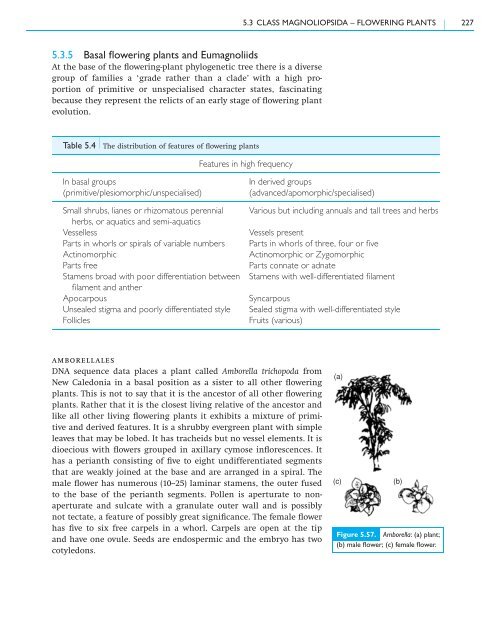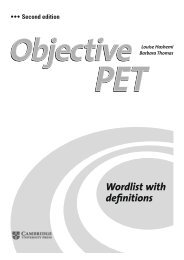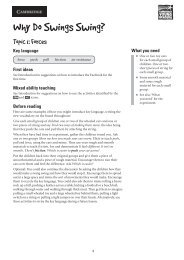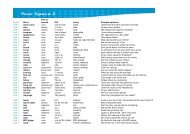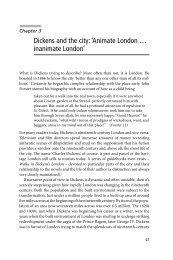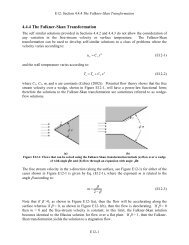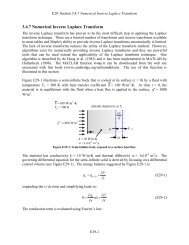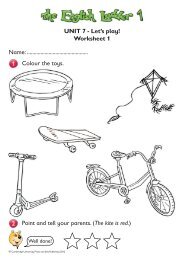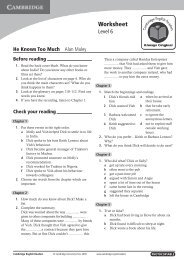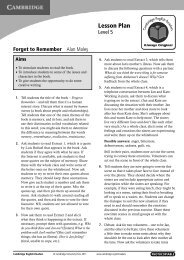5.3 Class Magnoliopsida – flowering plants - Cambridge University ...
5.3 Class Magnoliopsida – flowering plants - Cambridge University ...
5.3 Class Magnoliopsida – flowering plants - Cambridge University ...
Create successful ePaper yourself
Turn your PDF publications into a flip-book with our unique Google optimized e-Paper software.
<strong>5.3</strong>.5 Basal <strong>flowering</strong> <strong>plants</strong> and Eumagnoliids<br />
At the base of the <strong>flowering</strong>-plant phylogenetic tree there is a diverse<br />
group of families a ‘grade rather than a clade’ with a high proportion<br />
of primitive or unspecialised character states, fascinating<br />
because they represent the relicts of an early stage of <strong>flowering</strong> plant<br />
evolution.<br />
Table 5.4 The distribution of features of <strong>flowering</strong> <strong>plants</strong><br />
In basal groups<br />
(primitive/plesiomorphic/unspecialised)<br />
<strong>5.3</strong> CLASS MAGNOLIOPSIDA <strong>–</strong> FLOWERING PLANTS 227<br />
Features in high frequency<br />
In derived groups<br />
(advanced/apomorphic/specialised)<br />
Small shrubs, lianes or rhizomatous perennial<br />
herbs, or aquatics and semi-aquatics<br />
Various but including annuals and tall trees and herbs<br />
Vesselless Vessels present<br />
Parts in whorls or spirals of variable numbers Parts in whorls of three, four or five<br />
Actinomorphic Actinomorphic or Zygomorphic<br />
Parts free Parts connate or adnate<br />
Stamens broad with poor differentiation between<br />
filament and anther<br />
Stamens with well-differentiated filament<br />
Apocarpous Syncarpous<br />
Unsealed stigma and poorly differentiated style Sealed stigma with well-differentiated style<br />
Follicles Fruits (various)<br />
amborellales<br />
DNA sequence data places a plant called Amborella trichopoda from<br />
New Caledonia in a basal position as a sister to all other <strong>flowering</strong><br />
<strong>plants</strong>. This is not to say that it is the ancestor of all other <strong>flowering</strong><br />
<strong>plants</strong>. Rather that it is the closest living relative of the ancestor and<br />
like all other living <strong>flowering</strong> <strong>plants</strong> it exhibits a mixture of primitive<br />
and derived features. It is a shrubby evergreen plant with simple<br />
leaves that may be lobed. It has tracheids but no vessel elements. It is<br />
dioecious with flowers grouped in axillary cymose inflorescences. It<br />
has a perianth consisting of five to eight undifferentiated segments<br />
that are weakly joined at the base and are arranged in a spiral. The<br />
male flower has numerous (10--25) laminar stamens, the outer fused<br />
to the base of the perianth segments. Pollen is aperturate to nonaperturate<br />
and sulcate with a granulate outer wall and is possibly<br />
not tectate, a feature of possibly great significance. The female flower<br />
has five to six free carpels in a whorl. Carpels are open at the tip<br />
and have one ovule. Seeds are endospermic and the embryo has two<br />
cotyledons.<br />
(a)<br />
(c)<br />
(b)<br />
Figure 5.57. Amborella: (a) plant;<br />
(b) male flower; (c) female flower.


